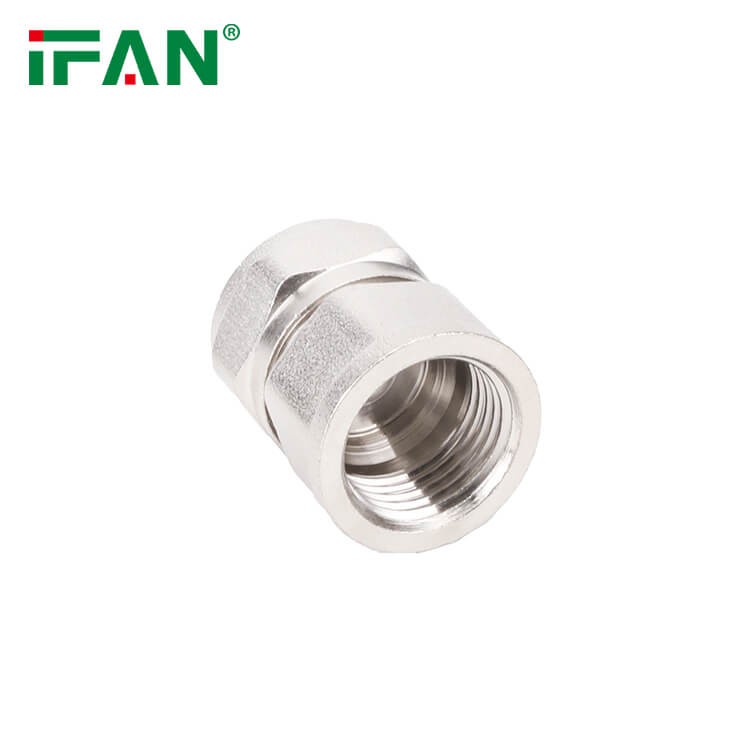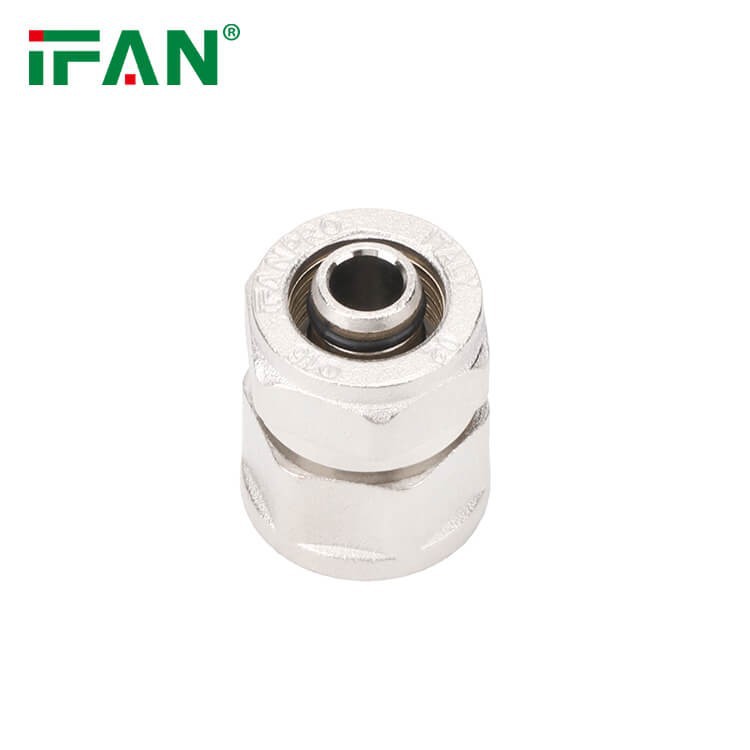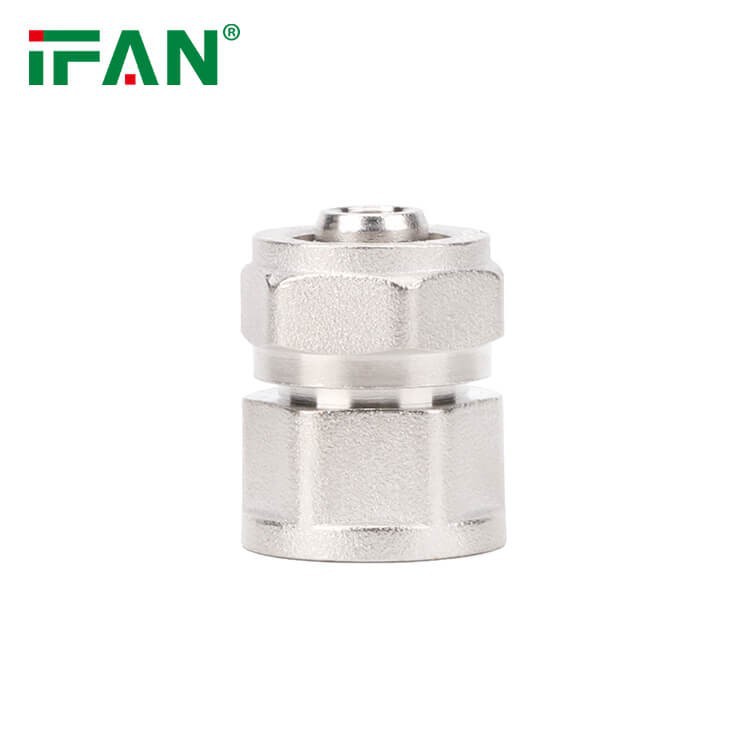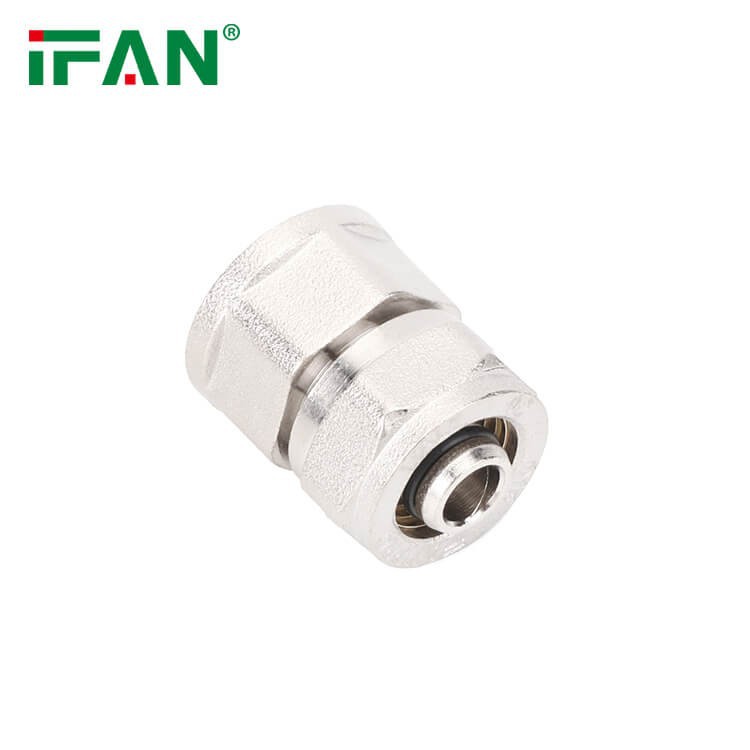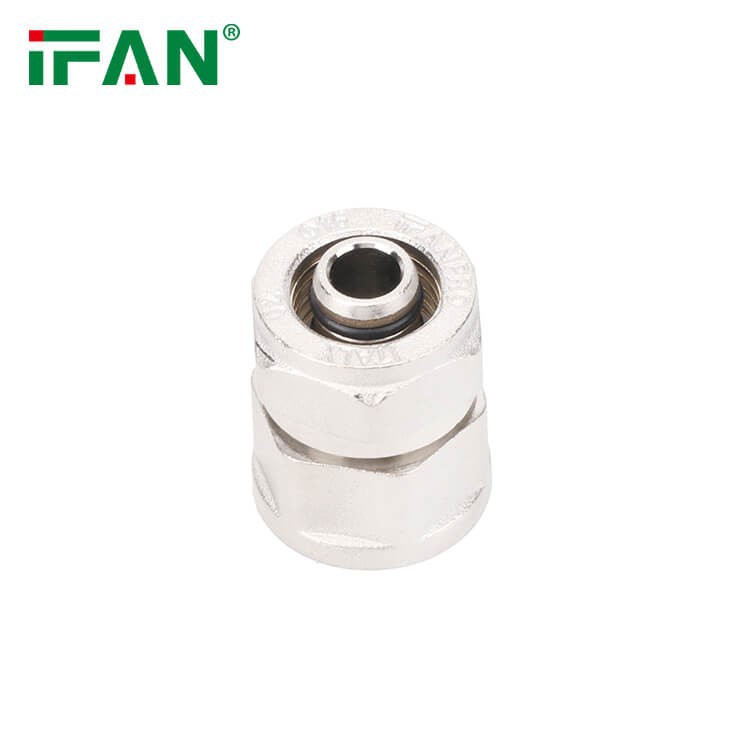PEX Compression Fitting Female Socket
IFAN factory 30+ years manufacture experience support color /size customization support free sample.Welcome to consult for catalog and free samples.This is our Facebook Website:www.facebook.com,Click to watch IFAN's product video.Compared with Tomex products, our IFAN products from quality to price are your best choice, welcome to buy!
Chemical Compatibility of PEX Brass Compression Fittings
Introduction
PEX brass compression fittings are a common choice in plumbing systems due to their reliability and ease of installation. However, their performance can be significantly affected by chemical compatibility. This article explores the chemical interactions between PEX (cross-linked polyethylene) pipes, brass fittings, and various substances they may encounter in plumbing systems. Understanding these interactions is essential for ensuring the longevity and effectiveness of the fittings.

Material Properties and Chemical Resistance
1. PEX (Cross-Linked Polyethylene):
- Chemical Resistance: PEX is known for its excellent chemical resistance to a wide range of substances, including most acids, bases, and alcohols. It is also resistant to chlorine and other common disinfectants used in water treatment.
- Limitations: However, PEX can be degraded by prolonged exposure to certain solvents, petroleum-based products, and strong oxidizing agents. Ensuring that PEX is not exposed to incompatible chemicals is crucial for maintaining its integrity.
2. Brass:
- Composition and Properties: Brass is an alloy primarily composed of copper and zinc, with possible additions of other elements like lead, tin, or nickel. Brass fittings are valued for their strength, durability, and resistance to corrosion.
- Chemical Vulnerabilities: Brass is susceptible to dezincification, a form of corrosion where zinc is leached from the alloy, leaving behind a porous, weakened copper structure. This can be exacerbated by exposure to water with high levels of chlorides, sulfates, or ammonia.
Common Chemicals in Plumbing Systems
1. Water Treatment Chemicals:
- Chlorine and Chloramines: Used to disinfect drinking water, chlorine and chloramines can cause oxidative degradation of PEX over time. While PEX is generally resistant to these chemicals, high concentrations or prolonged exposure can reduce its lifespan.
- Corrosion Inhibitors: Chemicals like orthophosphates are added to water to prevent pipe corrosion. These inhibitors generally do not affect PEX but can interact with brass, potentially reducing dezincification.
2. Household Chemicals:
- Detergents and Cleaners: Common household cleaners and detergents can come into contact with plumbing systems. PEX is typically resistant to these chemicals, but brass fittings can be affected by strong acidic or alkaline cleaners.
- Pesticides and Fertilizers: In agricultural applications, water can carry traces of pesticides and fertilizers. While PEX shows good resistance, brass fittings might suffer corrosion if these substances contain high levels of ammonia or other reactive agents.
3. Industrial Chemicals:
- Solvents and Lubricants: In industrial settings, PEX and brass fittings may encounter various solvents and lubricants. PEX is resistant to many solvents but can be degraded by petroleum-based products. Brass fittings should avoid contact with ammonia-based solutions to prevent stress corrosion cracking.
Mitigation Strategies
1. Material Selection:
- Alternative Alloys: In environments where brass is susceptible to chemical attack, using alternative materials such as stainless steel or specialized brass alloys with higher resistance to dezincification can enhance durability.
- Protective Coatings: Applying protective coatings to brass fittings can prevent direct contact with corrosive substances, extending the lifespan of the fittings.
2. System Design:
- Chemical Segregation: Designing plumbing systems to minimize the contact between susceptible materials and reactive chemicals can prevent degradation. This includes using barriers or isolation valves where necessary.
- Regular Maintenance: Implementing regular inspection and maintenance routines can identify early signs of chemical attack and allow for timely interventions, such as replacing affected fittings or adjusting chemical dosages.
3. Water Quality Management:
- Monitoring and Control: Regularly monitoring water quality and adjusting treatment protocols can minimize the impact of corrosive chemicals on plumbing systems. Ensuring that water treatment chemicals are dosed correctly can prevent excessive exposure.
- Use of Inhibitors: Adding corrosion inhibitors to the water can protect both PEX pipes and brass fittings from chemical attack. These inhibitors form protective films on the surfaces of the materials, reducing their reactivity.

Conclusion
The chemical compatibility of PEX brass compression fittings is a critical factor in their performance and longevity. Understanding the interactions between PEX, brass, and various chemicals encountered in plumbing systems allows for informed material selection, system design, and maintenance practices. By addressing these factors, it is possible to enhance the durability and reliability of plumbing systems, ensuring their safe and efficient operation in a wide range of applications. Regular monitoring and proactive maintenance are essential to mitigate the effects of chemical exposure and maintain system integrity.
Hot Tags: pex compression fitting female socket, China, suppliers, manufacturers, factory, wholesale, cheap, discount, low price, in stock, free sample, PPR Fitting Socket, Compression Equal Socket, PEX Sliding Fitting, Pure Plastic PPR Pipe, PPR Fitting Tee, Bidet Sprayer
Send Inquiry





